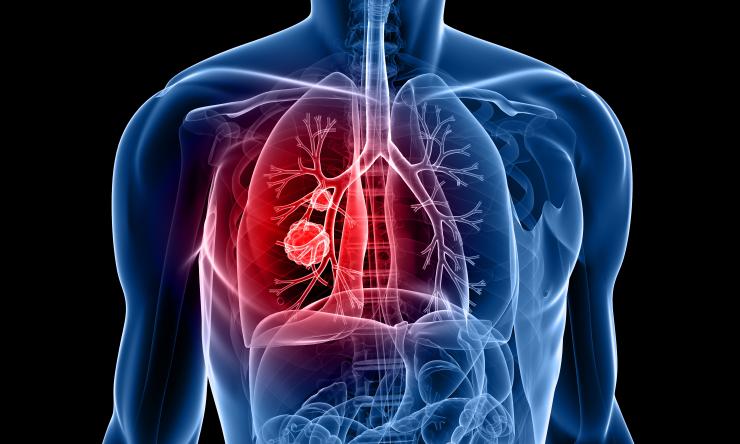Ultrafine particles can change defense against lung cancer
While it may seem common knowledge that smoking is bad for your lungs, if and how ultrafine particles present in cigarette smoke impact the development and progression of lung cancer remains unclear. Researchers at Baylor College of Medicine sought to find how airborne ultrafine particles in smoke can change a host’s defense against lung cancer.
In a study published in the current edition of Science Advances, Dr. Cheng-Yen Chang, a postdoctoral fellow in Dr. Farrah Kheradmand’s lab in the Department of Medicine – Pulmonary at Baylor, and their team discovered that exposure to ultrafine particles alters the function of immune cells in the lungs, disabling their natural defense mechanism against tumors. They found that ultrafine particles change the cell’s primary energy source, creating new byproducts in the lungs. Accumulation of the new byproducts can decrease the host’s immune defense, allowing tumors to escape detection.
These particles are not just found in cigarette smoke; environmental and other natural fires also incompletely combust organic matter that generates ultrafine particles. Kheradmand and colleagues at Rice University had previously found that immune cells in the lungs of heavy smokers contain particles that they identified as nano-sized elemental carbon black.
“When we breathe, we inhale many particles of different sizes. They are lodged somewhere along the airways, like in the nose or trachea, depending on their size. Ultrafine particles are so small they can navigate the respiratory system and deposit in the far distal part of the lung that is used for gas exchange – the process of breathing,” Kheradmand said. “It is at that point where these particles can collect and begin to alter the way lung immune cells function.”
Using two different mouse models of lung cancer, Chang was able to replicate the same type of exposure to ultrafine particles typically seen in a heavy smoker. Both mouse models showed accelerated lung cancer progression when mice were exposed to nano-sized carbon black.
“What we saw was that the immune cells changed what they used for energy. They went from using fat, which is what is seen in the average cell, to using sugar. The new byproducts alter immune cells allowing for tumors to escape recognition,” Chang said. “This exposure made tumors more aggressive and more likely to metastasize or spread throughout the body.”
Another surprise was that whether mice were predisposed to develop cancer didn’t matter; exposure to ultrafine particles still led to changes in energy usage from fat to sugar in immune cells even in the absence of any tumor.
“The particles change the powerhouse of the cells, altering their internal machinery,” Kheradmand said.
The study only looked at how the ultrafine particles affected immune cells and cancer development; further studies are still needed to look at other factors such as the concentration of particles and length and type of exposure.
“We are only looking at the significance of having these particles present in the airways – whether they are causing and progressing the disease. We know they have been found in smokers’ lungs so our study simulated exposure similar to a heavy smoker,” Kheradmand said.
Chang and Kheradmand have shown in a past study that there is a way to make these particles more soluble so they can be cleared from the lungs. However, this is in lab models and only the first step to a potential treatment in the future and not a way to make smoking safe.
“As a rule of thumb, when it comes to smoking in general, there is no way to make any amount of exposure safe,” Kheradmand said. “The best is to avoid exposure from the start.”
Others who took part in the study include Ran You, Dominique Armstrong, Ashwini Bandi, Yi-Ting Cheng, Philip M Burkhardt, Luis Becerra-Dominguez, Matthew C Madison, Hui-Ying Tung, Zhimin Zeng, Yifan Wu, Lizhen Song, Patricia E Phillips, Paul Porter, John M Knight, Nagireddy Putluri, Xiaoyi Yuan, Daniela C Marcano, Emily A McHugh, James M Tour, Andre Catic, Laure Maneix, Bryan M Burt, Hyun-Sung Lee, David B Corry. (See publication for full list of affiliations)
Funding is from the Nancy Chang Professorship endowment, National Institutes of Health grant R01 ES029442-01, National Institutes of Health grant R01 AI135803-01, the U.S. Veterans Administration Merit grant CX000104, National Institutes of Health grant T32 AI053831, National Institutes of Health grant R01 HL117181, National Institutes of Health grant HL140398, National Institutes of Health grant R01 AI135803, National Institutes of Health grant R41 AI124997, the U.S. VA Office of Research and Development grant I01BX004828, National Institutes of Health grant R01 DK115454, National Institutes of Health merit award R37 CA248478, the Cancer Prevention and Research Institute of Texas (CPRIT) grant RP200443, the American Thoracic Society Unrestricted Grant, American Heart Association Career Development Award 19CDA34660279, American Lung Association Catalyst Award CA-622265, the Center for Clinical and Translational Sciences, McGovern Medical School Pilot Award 1UL1TR003167–01, Parker B. Francis Fellowship, the Southwest Center for Occupational and Environmental Health Pilot Projects Research Training Award CDC/NIOSH T42 OH008421, CPRIT RP160283 - Baylor College of Medicine Comprehensive Cancer Training Program, National Institutes of Health T32 GM088129, Baylor Research Advocates for Student Scientists (BRASS) scholarship, National Institutes of Health T32 GM007330, National Institutes of Health Institutional Research and Career Development Award K12 GM 88010-12, National Institutes of Health T32 DK060445-17.










